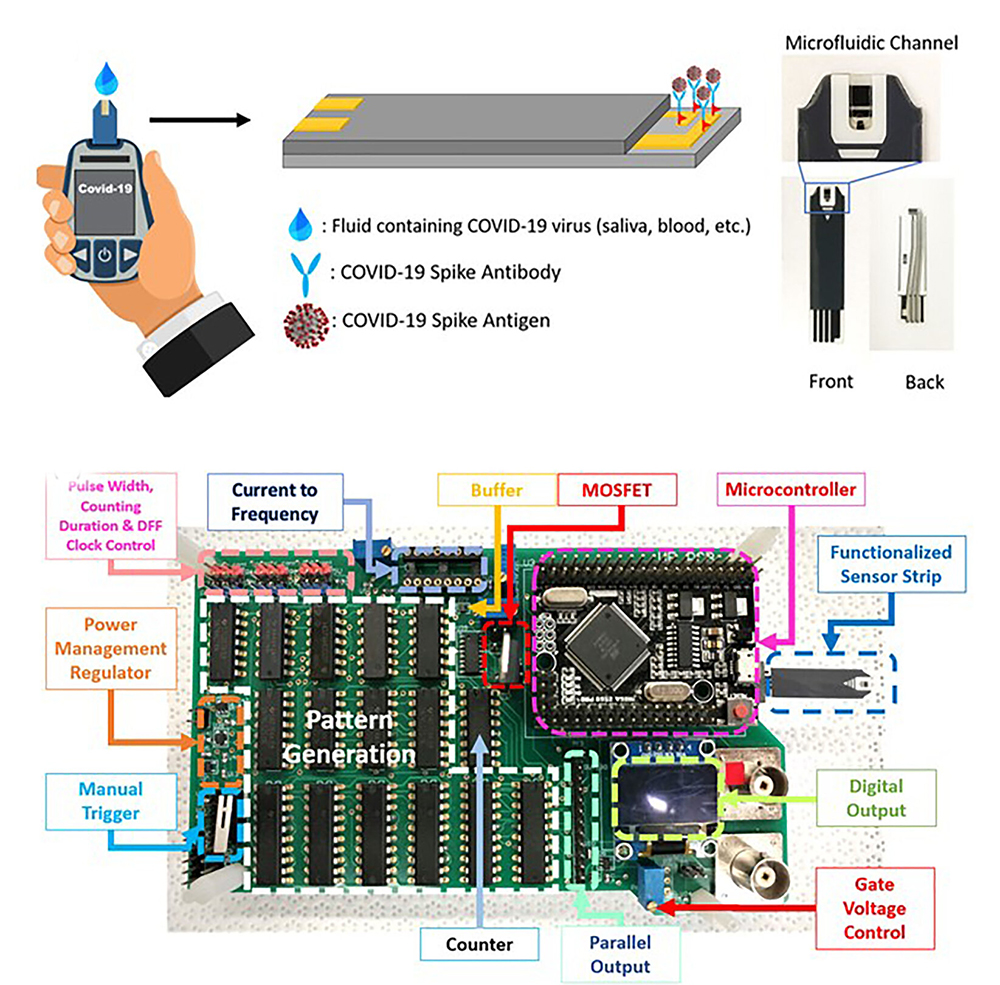Superfast, portable COVID-19 testing method detects the virus much faster than currently available methods.
Researchers from the University of Florida, and Taiwan’s National Chiao Tung University have developed a rapid and sensitive testing method for COVID-19 biomarkers. Their findings were recently published in the Journal of Vacuum Science & Technology B.
The COVID-19 pandemic made it clear that technological innovations were urgently needed to detect, treat, and prevent the SARS-CoV-2 virus. As the pandemic continues to ravage many parts of the world, there is still a need for rapid, reliable and inexpensive testing.
The team of international researchers leveraged their expertise to develop a sensor system that provides detection within 1 second, which is far faster than current COVID-19 detection methods. These researchers previously demonstrated detection of biomarkers relevant in epidemics and emergency medicine, such as the Zika virus, heart attacks, and cerebral spinal fluid leaks.
“This could alleviate slow COVID-19 testing turnaround time issues,” said Minghan Xian, first author and a chemical engineering Ph.D. candidate at the University of Florida.
Detecting the presence of the virus requires amplifying the numbers of the biomarker, such as the copies of viral ribonucleic acid (RNA) in the common polymerase chain reaction (PCR) technique for COVID-19 detection, or via amplifying the binding signal for a target biomarker. The group’s method amplifies the binding signal for a target biomarker.
 “Our biosensor strip is similar to commercially available glucose test strips in shape, with a small microfluidic channel at the tip to introduce our test fluid,” said Xian. “Within the microfluidic channel, a few electrodes are exposed to fluid. One is coated with gold, and COVID-relevant antibodies are attached to the gold surface via a chemical method.”
“Our biosensor strip is similar to commercially available glucose test strips in shape, with a small microfluidic channel at the tip to introduce our test fluid,” said Xian. “Within the microfluidic channel, a few electrodes are exposed to fluid. One is coated with gold, and COVID-relevant antibodies are attached to the gold surface via a chemical method.”
During measurement, sensor strips are connected to a circuit board via a connector, and a short electrical test signal gets sent between the gold electrode bonded with COVID antibody and another auxiliary electrode. This signal is then returned to the circuit board for analysis.
“Our sensor system—circuit board—uses a transistor to amplify the electrical signal, which then gets converted into a number on the screen,” said Xian. “The magnitude of this number depends on the concentration of antigen, the viral protein, present within our test solution.”
While the system’s sensor strips clearly must be discarded after use, the test circuit board is reusable. This means the cost of testing may be greatly reduced.
The versatility of this technology goes far beyond detecting COVID-19.
“By altering the type of antibodies attached to the gold surface, we can repurpose the system to detect other diseases,” said Xian. “The system can serve as a prototype for modularized, inexpensive protein biomarker sensors for expedient real-time feedback within clinical applications, operating rooms, or home use.”
Xian is a Ph.D. candidate in the Ren Research Lab lead by University of Florida Department of chemical engineering Distinguished Professor, Fan Ren, Ph.D. The Ren Research Lab aims to develop highly sensitive and low-cost health sensor technology, which can be implemented in a wireless-capable, real-time, and handheld sensor for personal and medical use.
The article, “Fast SARS-COV-2 Virus Detection Using Disposable Cartridge Strips and Semiconductor-Based Biosensor Platform,” is authored by Minghan Xian, Hao Luo, Xinyi Xia, Chaker Fares, Patrick H. Carey IV, Chan-Wen Chiu, Fan Ren, Siang-Sin Shan, Yu-Te Liao, Shu-Min Hsu, Josephine F. Esquivel-Upshaw, Chin-Wei Chang, Jenshan Lin, Steven C. Ghivizzani, and Stephen J. Pearton. It appeared in Journal of Vacuum Science & Technology B on May 18, 2021 (DOI: 10.1116/6.0001060).

